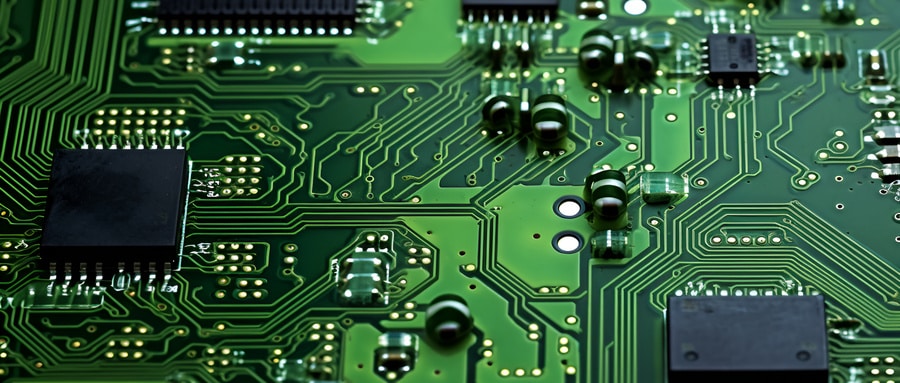Mastering the Realm of Rigid PCBs: A Insight Into Their Design, Application, and Manufacturing
Rigid Printed Circuit Boards (PCBs) hold an indispensable place in electronics, serving as the backbone of many electronic devices we use every day – smartphones, computers, automotive apps… This comprehensive guide gives an in-depth examination of rigid PCB design, construction, application and manufacturing process – from its components design and assembly through manufacturing process and installation process.
An introduction: rigid printed circuit boards (PCBs) are types of circuit boards characterized by their non-flexible surface. Comprised of sturdy materials like fiberglass, they form the physical foundation for transistors, diodes, and integrated circuits to interconnect into our everyday gadgets.
Designing rigid PCBs involves an intricate sequence of steps. Starting with design, an understanding of electro-mechanical assembly principles must be present for engineering to draft an accurate schematic diagram with all electronic components connected by their wires and their connections arranged accurately on it. Next comes creation in AutoCAD or OrCAD of the layout which displays each layer accurately as well as all electronic components positioned accurately on it.
Subsequently, the manufacturing process starts in earnest. A base material, typically FR4, is prepared and used as the bulk of the board; copper traces are then etched onto this substrate using photolithography or similar processes before additional layers are added until its final form takes shape and components can be soldered onto it according to previously designed layouts. All this requires extreme precision in order to produce reliable electronics.
Rigid PCBs come in various forms: single-sided, double-sided or even multi-layered boards – each with its own set of characteristics and application areas. Single-sided boards tend to be basic and less costly while double-sided PCBs allow for increased component density. Multi-layered PCBs, on the other hand, boast greater capacity to support complex circuitry applications, such as those found in medical devices, satellite technology or high-speed processors requiring limited space.

Rigid PCBs can be found virtually everywhere, as their robust performance makes them suitable for most environmental conditions. From consumer electronics, automotive, aerospace, telecommunications and healthcare to military applications – rigid PCBs deliver outstanding performance that matches up with their respective applications.
Rigid PCB’s significance to electronics cannot be overstated. Although flexible and rigid-flex PCBs have become more affordable over the years, rigid PCBs remain popular due to their durability, wide applicability, and manageable manufacturing costs – factors which explain their wide spread use today. Through an examination of their design, applications, and manufacturing process it becomes evident why rigid PCBs remain ubiquitous in today’s technology-driven society.
To fully realize the advantages of rigid PCBs, an in-depth knowledge and appreciation is key in order to reap their full potential benefits. By following this guide you are now one step closer to mastering this fascinating world!
Rigid PCB FAQ:
- Q: What is a rigid printed circuit board (PCB)?
A: A rigid PCB is a type of PCB in which the board material is made to be rigid, meaning it’s inflexible and holds shape without needing any additional support. - Q: What are the common materials used for rigid printed circuit boards?
A: The most common material used in rigid printed circuit boards is FR-4, a type of glass-reinforced epoxy laminate. - Q: What are the advantages of using rigid printed circuit boards?
A: Rigid printed circuit boards are durable and tough, providing stable surfaces for components. They’re generally easier to manufacture and troubleshoot than flexible PCBs, and can handle greater component densities. - Q: Where are rigid printed circuit boards typically used?
A: Rigid printed circuit boards are found in a wide range of applications, including consumer electronics, computers, and industrial machines–anywhere sturdy, durable circuits are required. - Q: Can rigid printed circuit boards be multi-layered?
A: Yes, rigid printed circuit boards can be multi-layered. They are often seen ranging from single-layered to 12 layers or more, depending on the complexity of the circuit. - Q: Can a PCB be both rigid and flexible?
A: Yes, these are known as rigid-flex PCBs. They feature areas of rigid and flexible circuits, offering a compact, robust solution for complex circuit designs. - Q: What aspects should be considered when designing a rigid printed circuit board?
A: Major considerations include the design requirements, board thickness, layer count, component placement, trace layout, and thermal management. - Q: How does the manufacturing process differ for rigid printed circuit boards?
A: Compared to flexible PCBs, rigid printed circuit boards often have simpler manufacturing processes, with less need for specialized handling or machinery. - Q: What is the typical lifespan of a rigid printed circuit board?
A: The lifespan of a rigid PCB can be many years, though it largely depends on factors like the quality of materials used, operating conditions, and maintenance or repair practices. - Q: How are rigid PCBs tested for quality and performance?
A: Various tests can be conducted, including visual inspection, automated optical inspection (AOI), X-ray inspection, and function testing. Testing ensures the PCB meets all design specifications and is free from defects.























